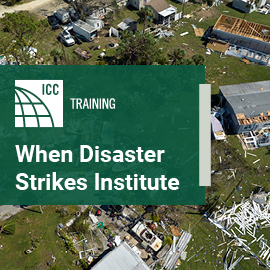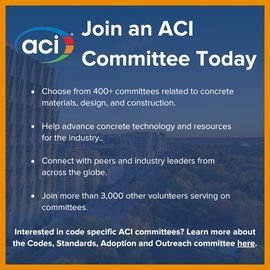
The International Code Council laid the foundation for governments to meet their climate goals
![]() As more state and local jurisdictions have placed a priority on creating sustainable and resilient communities, many have set strong targets to reduce the energy use and greenhouse gases (GHGs) associated with commercial and residential buildings. Recognizing the essential role energy codes play in reaching those goals, the International Code Council, developer of the International Energy Conservation Code (IECC), released a new framework t
As more state and local jurisdictions have placed a priority on creating sustainable and resilient communities, many have set strong targets to reduce the energy use and greenhouse gases (GHGs) associated with commercial and residential buildings. Recognizing the essential role energy codes play in reaching those goals, the International Code Council, developer of the International Energy Conservation Code (IECC), released a new framework t![]() o ensure governments have the tools to respond to the biggest challenges of our time.
o ensure governments have the tools to respond to the biggest challenges of our time.
The new framework, Leading the Way to Energy Efficiency: A Path Forward on Energy and Sustainability to Confront a Changing Climate, provides a multipronged approach to deliver the energy efficiency and other GHG reduction strategies we need – with the IECC at the core of that approach. The IECC provides a strong basis for reaching building energy efficiency goals, with base energy efficiency requirements in the 2021 IECC only 10 percent away from net-zero for residential buildings. Each future edition will only build on this, as the revised scope and intent set clear commitments for the content of the IECC moving forward – including no rollbacks in energy savings from edition to edition, requirements to include pathways to achieve zero-energy buildings today and by 2030, and the ability to incorporate strategies for decarbonization, electrification and electric vehicle charging.
Using a tiered approach, the framework offers adopting jurisdictions a menu of options, from a set of minimum requirements to pathways to net-zero energy and additional greenhouse gas reduction policies. The Code Council will also be developing additional resource documents that provide a suite of solutions, recognizing that when it comes to reaching a community’s energy efficiency goals, there is no one-size-fits-all strategy.
Working with governmental members to create relevant energy codes
While the new framework, along with an updated scope and intent for the IECC moving forward, lay the foundation for energy efficiency, it will take a continued collaboration from all interested parties – starting from creation to implementation of energy codes – in order to reach individual government’s climate goals.
It is critical that all levels of government – federal, state and local – continue to work in close collaboration with the building industry to maximize and advance the current codes and standards by participating in the development process. Understanding the crucial role of governmental input, officials play a predominant role in developing the IECC, making up one-third of the development committees and serving as voting chairs. It is their participation, combined with active participants from across the industry, that will guide the IECC’s future success.
Energy efficiency won’t be met through code creation on its own
The content of codes are important, but it is just the first step in the process. State and local jurisdictions must then adopt and implement these codes and standards. After all, without adoption and a robust enforcement mechanism, the anticipated energy savings may not materialize. Per the U.S. Department of Energy and the Pacific Northwest National Laboratory, seven states have no energy conservation code adopted statewide, and 17 states have adopted codes that are roughly 33 percent less efficient than the current IECC or adopted more recent editions with amendments making them less efficient.
The development process for the IECC is intended to help, looking to the committees to simplify requirements to facilitate the code’s use and compliance rate, since bringing these jurisdictions to up-to-date codes will go a long way in reducing energy use. Given the lack of resources is a top impediment to the adoption of modern codes, the Code Council has encouraged the Biden administration and Congress to invest $450 million to support the adoption and effective implementation of building energy codes, a level of investment consistent with the commitment made in bipartisan legislation that cleared the U.S. House and the Senate Energy and Natural Resources Committee last congress.
Implementation is essential. Code departments need the tools and training to ensure energy codes are effectively enforced. The Code Council offers courses and personnel certifications to support effective use of energy codes. The Code Council is also supporting efforts by Congress to increase funding for the Department of Energy’s Building Energy Codes Office to support increased training and technical assistance.
Ultimately though, building policies remain squarely in the purview of state and local government.
Beyond energy efficiency – codes and standards build resilient communities
Energy codes are not just about saving kilowatt-hours (kWh) or reducing GHGs, but rather part of an ecosystem of building policies that support the health, safety and economic welfare of the communities that adopt them. Therefore, to truly build resilient communities, energy codes need to be adopted alongside a suite of codes and standards, like the family of I-Codes. A uniform regulatory environment not only safeguards the health and safety of buildings’ occupants but provides a standard for construction, maintenance and occupancy of structures. Additionally, it ensures communities can plan and prepare for, absorb, recover from and more successfully adapt to adverse events. In fact, FEMA projects that if all future construction adhered to up-to-date I-Codes, the U.S. would avoid more than $600 billion in cumulative losses from floods, hurricanes and earthquakes by 2060. While the National Institute of Building Sciences estimates that adopting modern editions of the I-Codes saves $11 for every $1 invested through mitigation benefits against those hazards.
As the leader in advancing resilient building codes, the Code Council has drawn up the plans to ensure that the IECC will continue to deliver energy savings and remain relevant for the communities that have embraced their responsibility to address the climate crisis. The foundation has been paved – now it is time to leverage the tools available and work together to achieve society’s goals.








